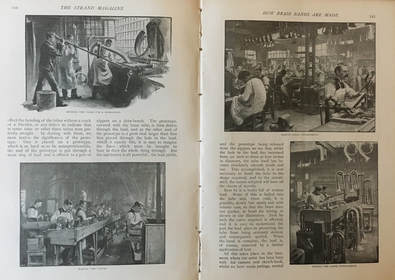|
Adophe Sax made his name during the Victorian period and is perhaps best known for the family of Saxophones. These were invented from the combination of an Ophicleide and a bass clarinet mouthpiece, the rest is history and a lot of Jazz and Military band music features this instrument. The Ophicleide from which it was invented was its self a development of such instruments as the Serpent Forveille, Russian Bassoon and Ophimonocleide by the maker Halari. (All instruments in the collection of A. Kershaw). The Ophicleide became the favored bass instrument with composers and the standard bass brass instruments in orchestras, military bands and small sacred and secular ensembles. (Original Method book in the collection of A. Kershaw) |
At the same time some instrument makers were developing the keyed brass instruments, Sax (and others mainly working in Paris, Germany and Austria) were excitedly developing instruments with the more reliable (by design) valve. Early examples were the ‘Berliner pumpen’, Stolzel, Rotary and perinet systems. It was with these early valves that Sax developed the Saxhorn and Saxotromba/Saxtuba families. These were then improved and championed by such musical celebrities of the time as the Distin family and of course Arban with regard to the Cornet. (Original Methods in the collection of A. Kershaw)
|
Many French makers (for example F Besson) moved to London where valved brass instruments were also popular partially thanks to the Distin’s concerts and the use within military bands and the established village bands. They joined with established British brands such as Boosey and co, Hawkes and Son and Higham to produce the family of instruments we now see regularly in our Brass Band movement and within the brass sections of military bands and orchestras. ‘The Strand Magazine’ November 1894 features the making of Besson brass instruments in an article ‘How brass bands are made’. (Original pages in the collection of A. Kershaw.) |

